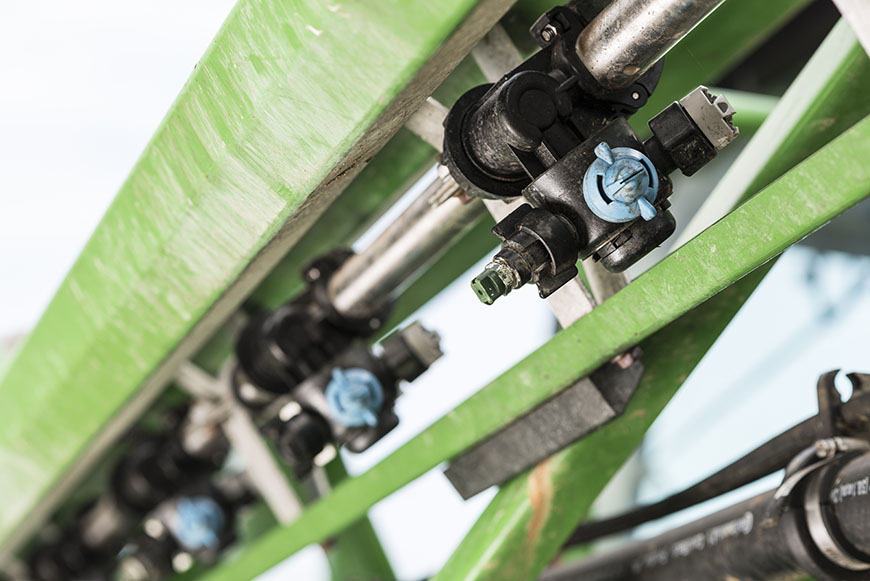Get More From Your Spray Applications

Recently, I worked with Iowa State University to create a presentation called “Increasing Pesticide Efficacy Through Proper Application Technique.” I’d like to share a few of the main points regarding application technology and best practices so you can make the most of your application investment. I encourage you to attend a Spray Clinic by WinField® United at your local retailer this winter to find out more.
1. Choose the right product and more.
The pesticide in the tank does you no good if it doesn’t reach the site of action in the pest. Many factors — including droplet size, spray nozzle type, water quality and time of day of the application — can greatly influence application effectiveness.
2. Calibrate the sprayer.
Calibrating sprayer nozzles ensures even application, correct product dose and enough product to spray the entire field.
3. Maintain a good spray pattern.
Nozzle spray patterns should be checked when calibrating each nozzle on the boom. Bad spray patterns can be caused by:
Nozzle selection affects droplet size, which influences drift potential and the amount of coverage. The ideal nozzle depends on:
Adding an adjuvant to the tank can maintain spray droplets at the right size to help control drift and keep the crop protection product on target.
6. Follow label instructions when tank mixing.
Always do a jar test before spraying an unknown combination of products. This will confirm whether or not they will be compatible with each other in a spray tank. Improper mixing order can create a tank mix solution that is unusable.
7. Clean the sprayer properly after an application.
Clean your equipment thoroughly as soon as possible after spraying to prevent products from drying and contaminating the tank, lines and tips.
Hear about the most recent developments in spray application technology, as well as the latest information on spray rules and regulations, at a Spray Clinic. Ask your agronomic advisor when one is coming to a location near you.
1. Choose the right product and more.
The pesticide in the tank does you no good if it doesn’t reach the site of action in the pest. Many factors — including droplet size, spray nozzle type, water quality and time of day of the application — can greatly influence application effectiveness.
2. Calibrate the sprayer.
Calibrating sprayer nozzles ensures even application, correct product dose and enough product to spray the entire field.
3. Maintain a good spray pattern.
Nozzle spray patterns should be checked when calibrating each nozzle on the boom. Bad spray patterns can be caused by:
- Clogged or worn nozzles
- Improper nozzle cleaning
- Incorrect boom height
Nozzle selection affects droplet size, which influences drift potential and the amount of coverage. The ideal nozzle depends on:
- The product being applied (systemic or contact)
- How much drift is expected
Adding an adjuvant to the tank can maintain spray droplets at the right size to help control drift and keep the crop protection product on target.
6. Follow label instructions when tank mixing.
Always do a jar test before spraying an unknown combination of products. This will confirm whether or not they will be compatible with each other in a spray tank. Improper mixing order can create a tank mix solution that is unusable.
7. Clean the sprayer properly after an application.
Clean your equipment thoroughly as soon as possible after spraying to prevent products from drying and contaminating the tank, lines and tips.
Hear about the most recent developments in spray application technology, as well as the latest information on spray rules and regulations, at a Spray Clinic. Ask your agronomic advisor when one is coming to a location near you.


